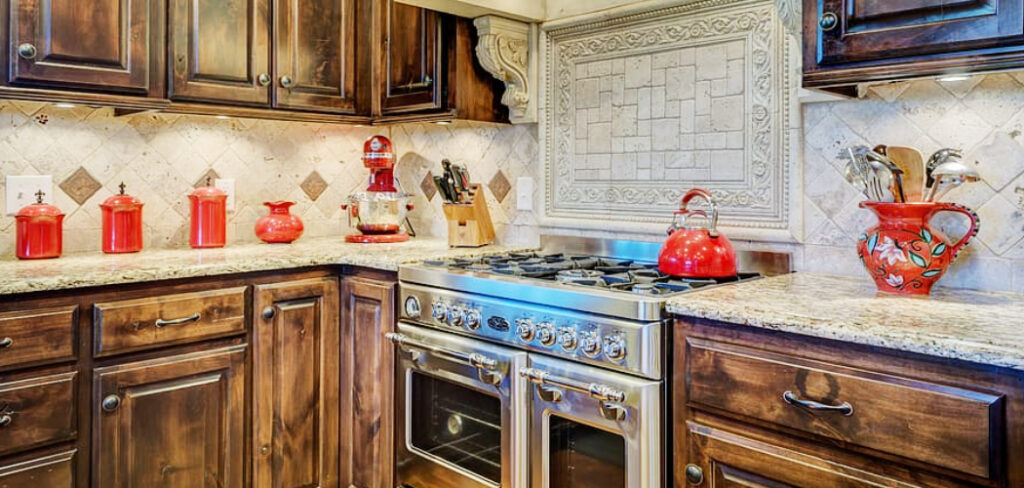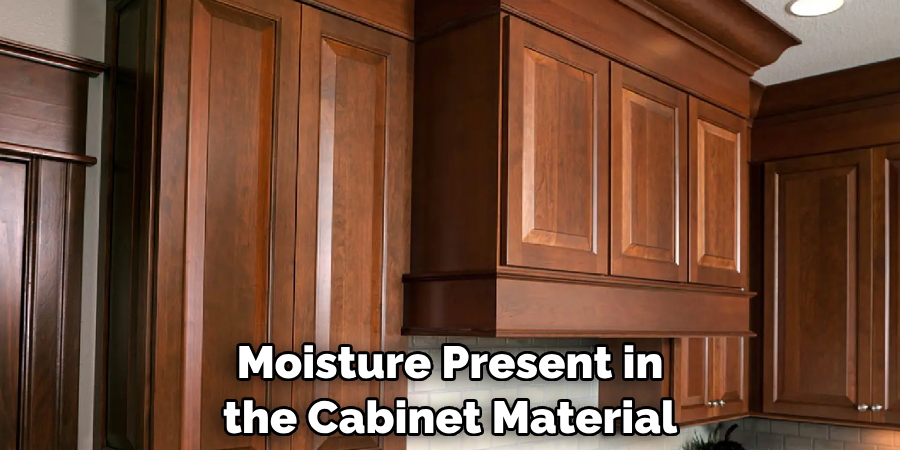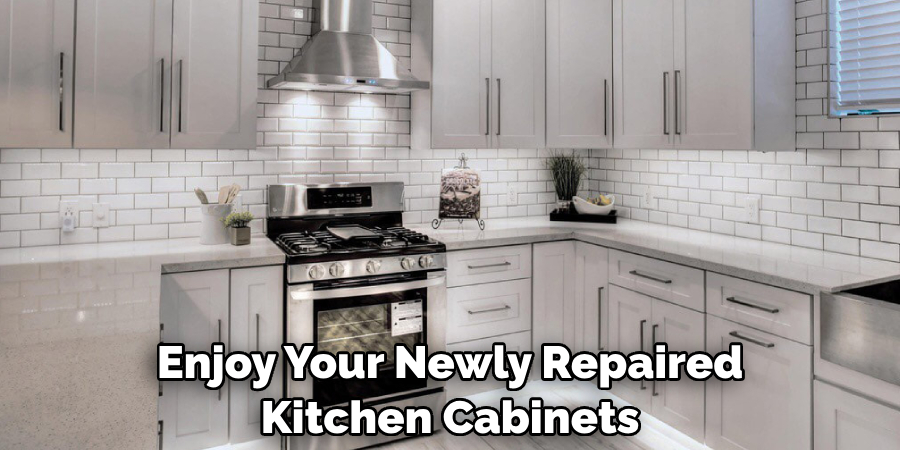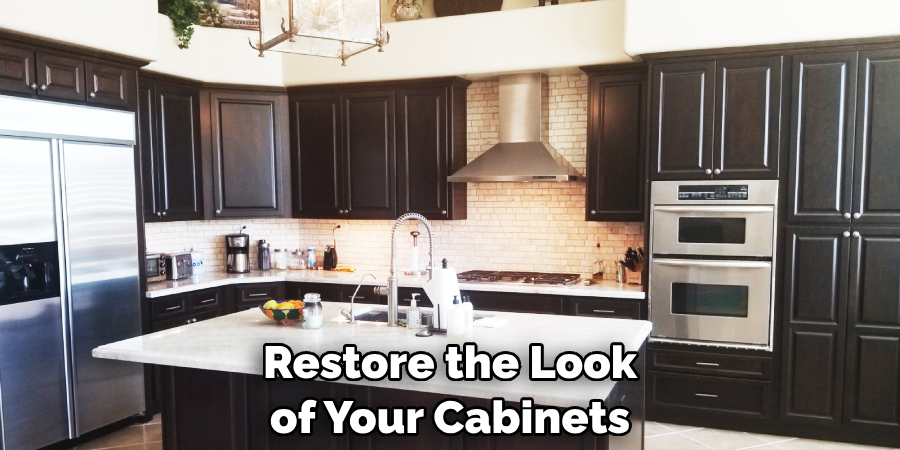Steam and excess moisture can wreak havoc on kitchen cabinets, causing them to warp, discolor, or even fall apart over time. Whether it’s from boiling pots, a dishwasher’s heat, or the general cooking process, these common activities can gradually compromise the structural integrity and aesthetics of your cabinets.

Repairing steam damage is essential not only to maintain the visual appeal of your kitchen but also to ensure the longevity of your cabinets.
In this article, we will guide you through how to repair steam damage on kitchen cabinets, helping you restore them to their former glory and prevent future deterioration. From assessing the extent of the damage to employing various repair methods, we’ll provide valuable insights to help you tackle this issue and preserve the beauty and functionality of your kitchen.
The Importance of Repairing Steam Damage on Kitchen Cabinets
Steam damage on kitchen cabinets can be an expensive issue to fix if not dealt with in a timely manner. Moisture and steam can cause serious damage to the wood, caulk, and finish of your kitchen cabinetry, leaving it looking less than desirable.
Taking the time to protect your cabinets from steam and moisture is essential for preserving their beauty and integrity over time.
This preservation is especially important if you live in an area with high humidity levels or near a heat source such as an oven, stovetop, or dishwasher. Without proper protection from steam and moisture, your cabinet doors and drawers can start to swell, warp, or even crack over time.
This can lead to costly repairs down the road that could have been avoided. Fortunately, there are a few steps you can take to help protect your cabinets from steam damage and keep them looking their best.
The first step is to make sure that any kitchen appliances or plumbing fixtures that produce steam are properly vented to the outside of the house. This will help reduce the amount of moisture in the air and prevent it from settling on your cabinetry.
Identifying Signs of Steam Damage
To check if your kitchen cabinets have been damaged by steam, the first thing to do is look for signs of water damage. Warping wood and discoloration are both indications that there may be some moisture present in the cabinet material.

You can also inspect the edges of the cabinet doors and drawers to see if they appear swollen or warped. Also take a look at the screws and hinges to make sure they are not rusting.
If you’re still uncertain, it may be worth testing if moisture is present in the cabinet material by using a damp cloth and pressing it against sections of the cabinets. If you find that moisture has been absorbed into the wood, then you know steam damage has occurred.
Unfortunately, repairing this type of damage is not always possible and you may have to replace the affected cabinets altogether. Although this can be a costly endeavor, it’s important to protect the integrity of your kitchen cabinets and make sure that water damage doesn’t occur in the future.
10 Steps How to Repair Steam Damage on Kitchen Cabinets
Gather Your Supplies
Before you begin the process of repairing steam damage on your kitchen cabinets, it is important to gather the necessary supplies. You will need a putty knife, sandpaper, wood filler, paint or stain, a brush or roller, and a vacuum cleaner. Make sure that you have all of the supplies that you will need before you start the repair process.
Clean the Cabinet Surface
The first step in repairing steam damage on kitchen cabinets is to clean the cabinet surface. Use a damp cloth to remove any dirt or debris from the surface of the cabinet. If there are stubborn stains, use a mild detergent and warm water to remove them. Once you have cleaned the surface of the cabinet, allow it to dry completely before moving on to the next step.
Remove Loose Paint
Once your cabinet has dried completely, use a putty knife to carefully scrape away any loose paint or finish from the damaged area. Be sure not to scratch or gouge the wood, as this could cause further damage down the road. Once all of the loose paint has been removed, use sandpaper to smooth out any rough edges and prepare for wood filler application.
Apply Wood Filler
Wood filler can be used to fill in any gaps or cracks caused by steam damage on kitchen cabinets. To apply wood filler, scoop some onto a putty knife and press it into any gaps in your cabinet’s surface with firm pressure until it is level with surrounding areas of the woodwork. Allow it to dry completely before proceeding with further steps in the repair process.

Sand Down Wood Filler
Once your wood filler has dried completely, use sandpaper to gently sand down any excess material until it is flush with the surrounding surfaces of the woodwork on your kitchen cabinets. Be sure not to over-sand as this could cause additional damage and make repairs more difficult later on down the line.
Prime Surface
Priming is an important step when repairing steam damage on kitchen cabinets as it helps ensure that paint adheres properly and provides extra protection against future moisture exposure.
To prime, use a brush or roller to apply one coat of primer over the entire affected area. Allow primer coat time necessary for proper drying according to the manufacturer’s instructions before applying paint.
Paint Cabinet Surface
Now that your cabinet has been primed, you can begin painting over the affected area. Use either brush or roller depending upon the size of the area being painted, making sure to cover the entire affected area with an even layer of paint color chosen for the project.
Allow the time necessary for proper drying according to the manufacturer’s instructions before moving on to the next step in the repair process.
Apply Clear Coat Finish
After paint has had the time necessary for proper drying, apply a clear coat finish over the entire affected area using a brush or roller until the desired look is achieved.
A clear coat finish helps protect the painted surface from future moisture exposure, while also providing a sheen that brings out beauty in the finished product once it returns ned back into place within the home environment.
Reattach Cabinet Door
Once the clear coat finish has had the time necessary for proper drying, reattach the cabinet door by aligning hinges and screws correctly so the door opens smoothly when pulled open without sticking at any point along the way due to improper alignment during the reattachment process.
Enjoy Your Newly Repaired Kitchen Cabinets!
Finally, enjoy your newly repaired kitchen cabinets by taking pride in knowing that the hard work put into the project paid off!

Not only did job help save money by avoiding costly replacement costs associated with new cabinetry purchases but also helped restore beauty within the home environment, which will last many years come if maintained properly throughout the life cycle!
Things to Keep in Mind When Repairing Stream Damage on Kitchen Cabinets
- If the damage is minor, you can usually fix it yourself; however, for major damage, you should always consult a professional for assistance.
- Before attempting any repairs on your own, it’s important to make sure that all surfaces are clean and free of dirt and debris; otherwise, the repair may not hold up properly or look as good as you’d like.
- It’s also important to understand the type of material that your cabinets are made of, as this will affect how you go about repairing them and what materials/products you’ll need to do so.
- To repair steam damage on wood cabinets, the first step is to remove any damaged or peeling paint or varnish. This can be done with a putty knife or a fine-grade sandpaper.
- Once all of the damaged material has been removed, you’ll need to lightly sand the entire surface and then apply a primer coat before repainting or refinishing the cabinets.
- If your kitchen cabinets are made from laminate, there are special repair kits you can purchase that will help to restore the look of your cabinets.

Conclusion
Repairing steam damage on kitchen cabinets is not as difficult as it may seem. With the use of the right tools and products, the process can be smooth and hassle-free. There are several things to bear in mind when attempting to fix kitchen cabinet steam damage, such as the surface area and type of finish you’re working with.
Furthermore, different techniques come into play depending on the age of your cabinets. If you follow these few tips outlined here, you should be able to restore your kitchen cabinets in no time.
Finally, remember to always give yourself plenty of time and take all necessary safety precautions when handling any kind of repair job for your kitchen or bathroom cabinets. Now that you know how to repair steam damage on kitchen cabinets, why wait? Get out there and start fixing!
Professional Focus
Angela Ervin, a former interior designer turned blogger, specializes in kitchen design and renovations. Through her website, she blends her passion for cooking with design expertise, sharing practical and creative ideas. Known for balancing functionality and beauty, Angela’s insightful content has made her a trusted voice in home design and lifestyle.
About the Author
Angela Ervin, an experienced interior designer and blogger, combines her passion for kitchen renovations with storytelling. Living in Petersburg with her family, she enjoys cooking and testing her projects firsthand. Known for her humor and relatable style, Angela shares creative, functional design insights through her content, making her a trusted voice in home design.
Education History
University: Virginia Commonwealth University
Degree: Bachelor of Fine Arts (BFA) in Interior Design
- Angela’s education at VCU focused on mastering core interior design principles, including spatial planning, color theory, materials selection, and sustainable design practices.
- She gained hands-on experience through studio projects and collaborative design exercises, which honed her ability to create functional and aesthetically pleasing environments.
- Her coursework also emphasized problem-solving and practical applications of design, preparing her for real-world projects like her self-directed kitchen renovations.
- The program’s strong foundation in both technical skills and creative expression shaped Angela’s ability to seamlessly integrate form and function in her work.


